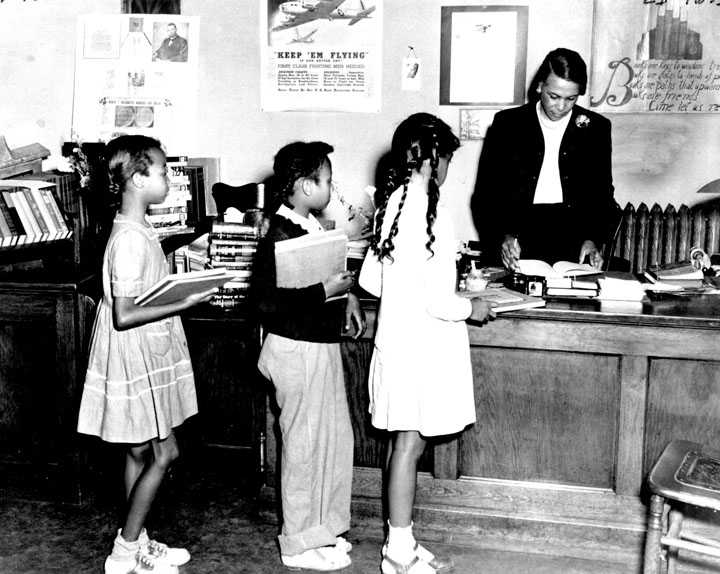Tourism and the growing shame surrounding the South’s propensity for public lynchings were among the deciding factors in the development of Asheville’s Colored Library. In the Dec.12, 1926, edition of The Sunday Citizen, the paper reported:
“Asheville’s conscience began to be disturbed. It saw the handsome Pack Memorial Library rise in all its chaste beauty, and could not forget that no negro could cross its entrance. It told visiting tourists of its friendship for its colored wards, it determination to do the right thing by them and its accomplishments along the line, and stammered a bit when asked what facilities it offered them for reading matter.”
The same article implored white residents to donate books to the new venture, stating:
“Whether they regard their donation of books as an act of generosity, fulfillment of an obligation … or a contribution of Asheville’s civic advancement, their books will be welcomed by the negroes. They will also [be] appreciated by white people who want Asheville to be able to tell its Northern tourists that its interest in the black man is not confined solely to keeping his neck out of a noose.”
The following year, on April 7, 1927, refreshments were served at the grand opening of the Colored Library, located inside the YMI Building. The evening celebration featured talks by city officials, including Mayor John H. Cathey. The site’s librarian, Irene Hendrick, was also in attendance.
Updates on the library’s progress remained scant throughout the 1930s. But by the 1940s, a renewed interest in the space surfaced. On March 14, 1943, The Asheville Citizen offered a detailed account of the library. According to the paper, its total book collection had increased from its initial 1,128 to 5,160. Membership totaled 1,255.
Available books included biographies of George Washington Carver, Marian Anderson and Roland Hayes. The location held subscriptions to five newspapers and 10 magazines. With World War II in full swing, the library also had a radio available so patrons could listen to the latest news updates. Weekly displays on war efforts were featured at the site, as well.
“In the near future the librarian hopes to have a display of pictures of Asheville negroes in the armed forces,” the paper wrote, adding that Hendrick’s own son, Robert, served as a lieutenant (and later a captain).
By 1946, Hendrick continued work collecting books written by or about prominent African-Americans. “This will teach young people that if other people have been leaders and overcome obstacles, they can, too,” she stated in the July 21, 1946, Sunday edition of the Asheville Citizen-Times.
Over time, the library’s popularity and collection grew. By July 1950, it contained 6,395 books and subscriptions to 31 magazines and nine newspapers. Meanwhile, membership climbed to 2,243.
The following year the Colored Library became part of the city of Asheville’s library system and was designated the Market Street Branch.
Eight years later, on June 3, 1959, the branch relocated to 31 Eagle St. and was renamed the Market-Eagle Branch Library. At its opening, Hendrick was honored for her 32 years of service. According to The Asheville Citizen, she was given “a hand-printed scroll in which the board of trustees of City of Asheville libraries recognized in her ‘a blend of intellectual, personal and spiritual qualities that make her one of Asheville’s finest citizens.’”
On July 17, 1966, the Sunday edition of the Asheville Citizen-Times announced Hendrick’s plan to retire, after 40 years of service. The article included a statement by Anthony Lord, chairman of the library board. Lord stated:
“The library and the community will always be indebted to Mrs. Hendrick for her unique contribution and for the long and constructive career she has given us. The Market-Eagle Library — in a large sense her creation — has been an agency of great value. Now, with integration of the library system a long-accomplished fact, the Library Board has decided to close the Market-Eagle branch upon Mrs. Hendrick’s retirement. The Pack Library, with its longer hours and larger collection a block and half away, can meet the needs of former Market-Eagle patrons to a very satisfactory degree.”
Even after her retirement, Hendrick remained active in the community as a member of the Friends of the Library Auxiliary. She would die on March 26, 1992.
Editor’s note: Peculiarities of spelling and punctuation as well as antiquated and offensive language are preserved from the original documents.





Before you comment
The comments section is here to provide a platform for civil dialogue on the issues we face together as a local community. Xpress is committed to offering this platform for all voices, but when the tone of the discussion gets nasty or strays off topic, we believe many people choose not to participate. Xpress editors are determined to moderate comments to ensure a constructive interchange is maintained. All comments judged not to be in keeping with the spirit of civil discourse will be removed and repeat violators will be banned. See here for our terms of service. Thank you for being part of this effort to promote respectful discussion.